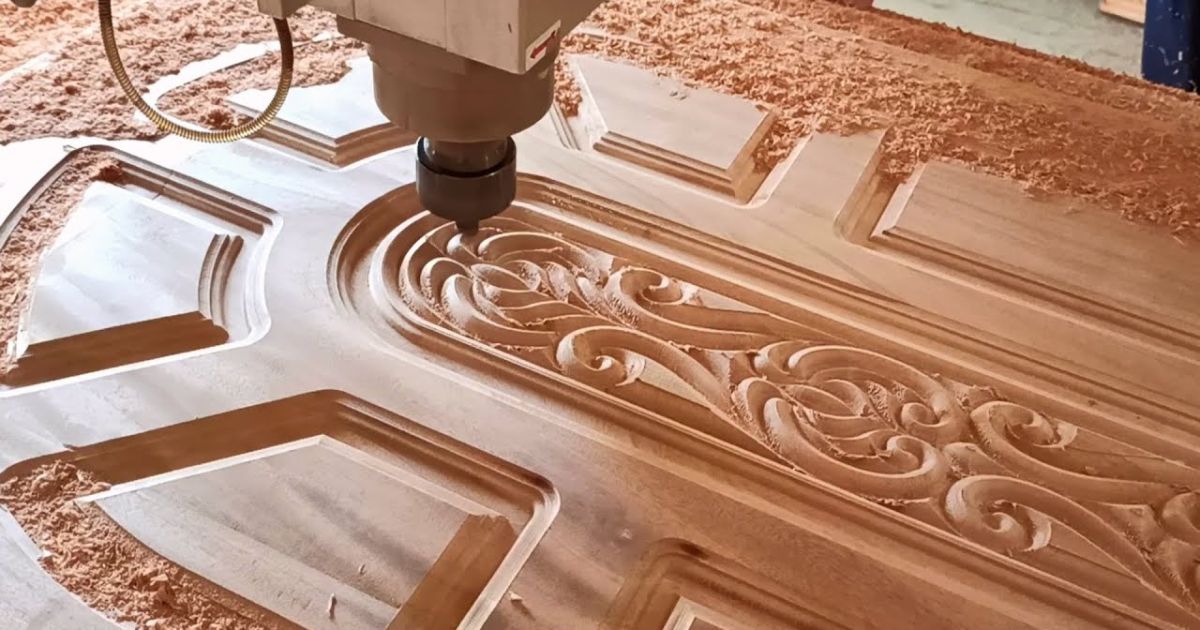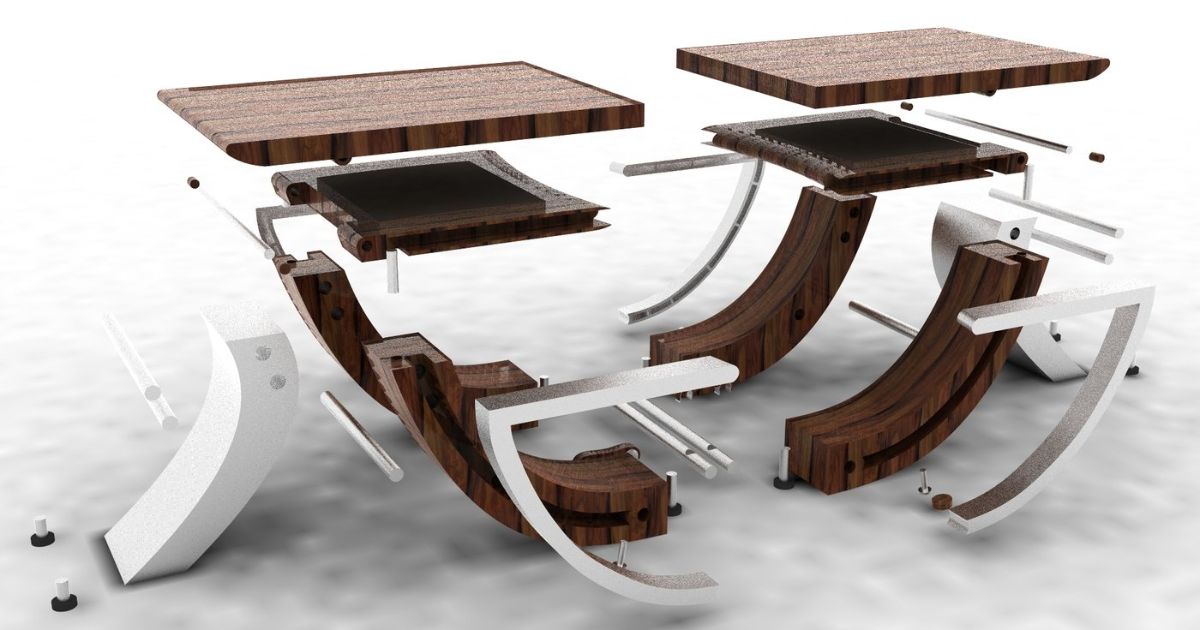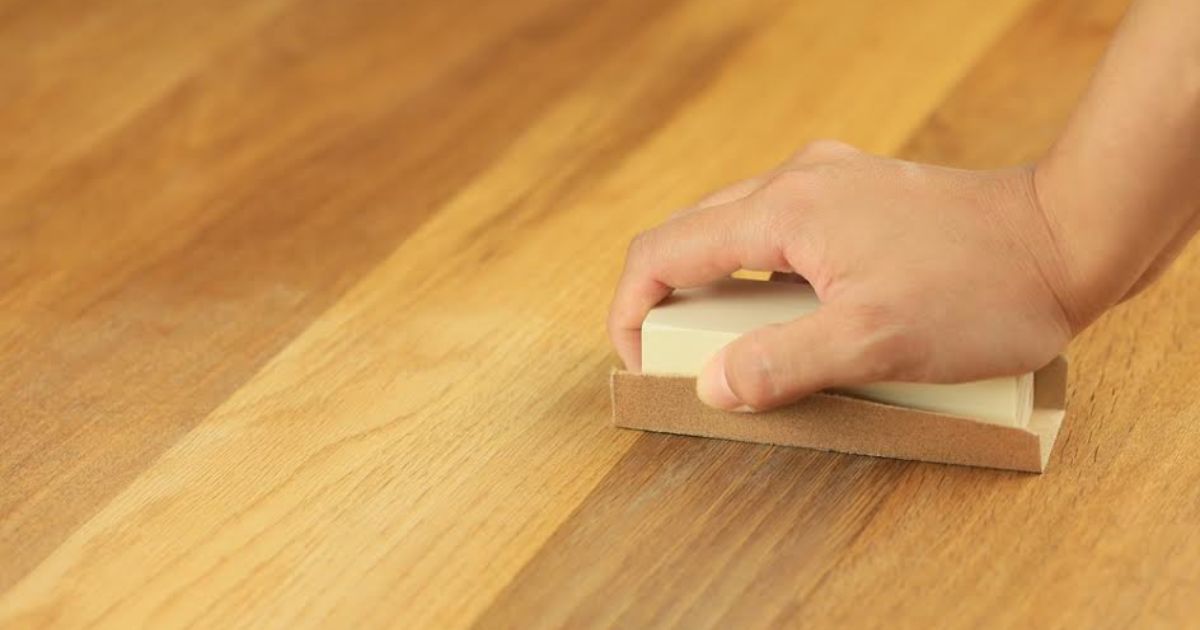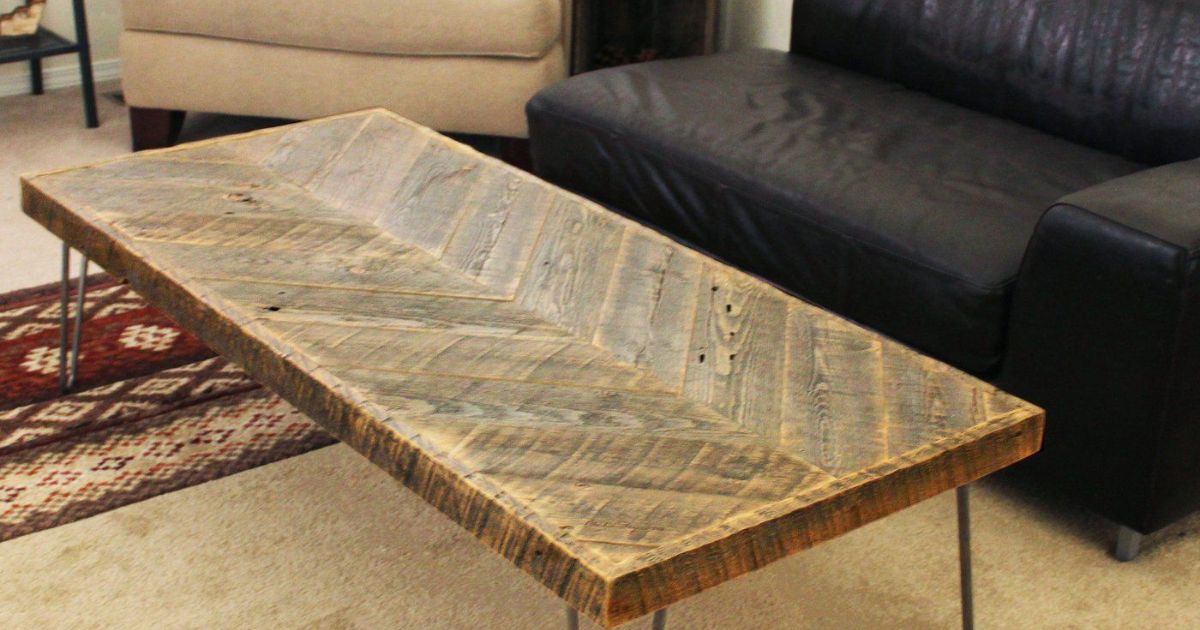In a world where sustainability and craftsmanship go hand in hand, building a coffee table from reclaimed wood is not only an eco-friendly choice but also a testament to your creativity and resourcefulness. This article unveils a step-by-step guide on transforming discarded lumber into a stunning centerpiece for your living space.
From selecting the perfect reclaimed wood to adding the final touches, embark on a journey of craftsmanship and create a coffee table that embodies both timeless beauty and environmental consciousness.
Key Takeaways
- Properly evaluate the quality and condition of reclaimed wood before using it for a coffee table.
- Choose the right type of reclaimed wood for the desired aesthetic and durability of the tabletop.
- Use appropriate techniques and tools for designing, cutting, and joining the tabletop and table legs.
- Ensure secure and stable connections between the tabletop pieces using dowels, glue, screws, or metal brackets.
Selecting the Right Reclaimed Wood
Choosing the appropriate reclaimed wood for your coffee table project requires evaluating the quality and condition of the available materials. When sourcing reclaimed wood for your project, it is crucial to consider the quality of the wood to ensure its durability and aesthetic appeal.
Start by inspecting each piece for signs of rot, decay, or insect damage. Look for wood that has been properly stored and protected, as this will minimize the risk of structural weaknesses. Check for any warping or splitting that may affect the stability of the finished coffee table.
Sourcing reclaimed wood from reputable suppliers or salvage yards can increase the chances of finding high-quality materials. By carefully evaluating the quality of the reclaimed wood, you can create a coffee table that not only adds character to your space but also stands the test of time.
Preparing the Wood for Construction
Effectively preparing the reclaimed wood for construction requires thorough cleaning and meticulous sanding. Before using the wood, it is important to remove any dirt, debris, or old finish from the surface. Begin by wiping down the wood with a damp cloth to remove any loose dirt. For stubborn stains, use a mild detergent solution or a mixture of vinegar and water.
Once the wood is clean, allow it to dry completely before proceeding. Next, sand the wood surface using coarse sandpaper to remove any roughness or imperfections. Gradually move to finer grit sandpaper for a smooth finish.
After sanding, it is advisable to apply a wood sealant to protect the wood from moisture and enhance its durability. Choose a sealant that is suitable for reclaimed wood and apply it according to the manufacturer’s instructions. This will ensure that your coffee table not only looks stunning but also withstands the test of time.
Designing and Cutting the Tabletop

When it comes to designing and cutting the tabletop for your reclaimed wood coffee table, there are a few key points to consider. Firstly, choosing the right type of reclaimed wood is crucial to achieve the desired aesthetic and durability.
Next, designing the tabletop involves determining the size, shape, and any additional features such as edges or patterns. Finally, cutting the wood requires precision and care to ensure the pieces fit together seamlessly and create a sturdy tabletop for your coffee table.
Choosing Reclaimed Wood
One important step in creating a coffee table from reclaimed wood involves carefully measuring and cutting the tabletop to the desired dimensions. Before diving into the design and cutting process, it is crucial to source the right reclaimed wood for your project. Here are a few key considerations when choosing reclaimed wood for your coffee table:
- Sourcing reclaimed wood: Look for reputable suppliers or salvage yards that specialize in reclaimed wood. They can provide a variety of options such as barn wood, salvaged timber, or even old furniture pieces.
- Benefits of using reclaimed wood: Reclaimed wood not only adds character and charm to your coffee table but also offers environmental benefits. By repurposing old wood, you are reducing the demand for new timber and minimizing waste.
- Quality and condition: Inspect the reclaimed wood for any signs of damage, rot, or insect infestation. Choose wood that is sturdy and in good condition to ensure a durable and long-lasting tabletop.
Designing the Tabletop
The designing and cutting of the tabletop is a crucial step in building a coffee table from reclaimed wood. When it comes to designing the tabletop, there are various woodworking techniques that can be used to create a unique and visually appealing piece.
One popular technique is to create a mosaic design using different pieces of reclaimed wood, which adds character and charm to the table. Another option is to go for a more traditional design with a simple, clean-cut tabletop. Once the design is finalized, cutting the tabletop to the desired size and shape is the next step.
It is important to measure accurately and use proper tools to ensure a precise cut. After the tabletop is cut, staining options can be considered to enhance the natural beauty of the reclaimed wood and protect it from damage.
Cutting the Wood
The cutting process is a crucial step in designing and shaping the tabletop of a coffee table made from reclaimed wood. To ensure a successful outcome, it is important to follow proper cutting techniques and safety precautions. Here are three key considerations:
- Measure twice, cut once: Accurate measurements are essential to achieve a precise fit for the tabletop. Take the time to measure and mark the wood accurately before making any cuts.
- Choose the right tools: Depending on the thickness and type of reclaimed wood, different cutting tools may be required. Circular saws, table saws, or hand saws can be used, but it is important to select the appropriate tool for the job.
- Wear protective gear: Safety should always be a priority when working with power tools. Wear safety goggles, gloves, and ear protection to reduce the risk of accidents and injuries.
Building the Table Frame
Constructing the table frame requires carefully measuring and assembling the reclaimed wood pieces. The table frame serves as the base for the coffee table, providing stability and support. To build the table base, start by cutting the reclaimed wood into the desired lengths and widths.
Once the pieces are cut, lay them out on a flat surface and arrange them according to the table design. Use a tape measure to ensure the pieces are aligned and evenly spaced. Next, attach the pieces together using wood glue and screws. This will create a sturdy frame that will hold the tabletop securely in place.
Finally, attach the legs to the table frame using screws, ensuring they are evenly spaced and securely fastened. By following these steps, you can create a beautiful coffee table with a strong and durable frame.
| Column 1 | Column 2 | Column 3 |
|---|---|---|
| Step 1 | Measure and cut the reclaimed wood into desired lengths and widths | Use a tape measure to ensure pieces are aligned and evenly spaced |
| Step 2 | Lay out the wood pieces on a flat surface, arranging them according to the table design | Ensure the pieces are evenly spaced |
| Step 3 | Attach the wood pieces together using wood glue and screws | This will create a sturdy frame for the table |
Assembling the Coffee Table

The next step in building your coffee table is the assembly process. This involves joining the table legs to the frame and securing the tabletop pieces in place. It is important to pay attention to detail and ensure that everything is aligned properly. Once the main structure is complete, you can add a glass top to the coffee table for a modern touch or apply any other finishing touches, such as sanding and staining, to enhance the appearance of your reclaimed wood coffee table.
Joining Table Legs
To properly assemble the coffee table, it is essential to secure the table legs using a sturdy and reliable joining method. There are various joinery techniques that can be used to ensure the stability and durability of the coffee table. Here are three options to consider:
- Mortise and tenon joints: This traditional joinery technique involves cutting a square or rectangular hole (mortise) in one piece of wood and inserting a corresponding projection (tenon) from another piece of wood into the hole. This creates a strong and secure connection between the table legs and the table top.
- Dowel joints: Dowel joints involve drilling holes in both the table legs and the table top and inserting wooden dowels to connect the pieces together. This method provides good strength and stability.
- Metal brackets: Using metal brackets is a quick and easy way to join the table legs. Brackets can be attached to the table legs and then screwed or bolted to the table top, providing a strong connection.
Securing Tabletop Pieces
During the final stage of assembling the coffee table, it is important to securely fasten the tabletop pieces together to ensure a stable and functional piece of furniture. Woodworking techniques play a crucial role in achieving this goal. One common method is using dowels and glue to join the tabletop pieces.
This involves drilling matching holes in the edges of the boards and inserting dowels coated in wood glue. The boards are then pressed together, creating a strong bond. Another technique is using pocket screws, which involve drilling angled holes and using specially designed screws to attach the boards.
This method provides a strong connection and is often favored for its simplicity and ease of use. Alternative materials such as metal brackets or corner brackets can be used to reinforce the tabletop pieces, adding an extra layer of stability.
Adding Finishing Touches
By carefully aligning and attaching the legs to the tabletop, a sturdy and visually appealing coffee table can be achieved. To add the finishing touches and complete the assembly of the coffee table, follow these steps:
- Sanding Techniques:
- Use a medium-grit sandpaper to remove any rough edges or imperfections from the wood.
- Follow up with a fine-grit sandpaper to create a smooth and polished surface.
- Pay attention to the corners and edges to ensure a uniform finish.
- Sealing Methods:
- Apply a wood conditioner to enhance the natural color and grain of the reclaimed wood.
- Choose a suitable sealant, such as polyurethane or wax, to protect the wood from moisture and everyday wear.
- Apply multiple coats of sealant, allowing each coat to dry before applying the next, for optimal protection and durability.
Sanding and Finishing the Wood

The application of a high-quality varnish to the reclaimed wood’s surface enhances its natural beauty and provides long-lasting protection. Before applying the varnish, it is important to properly prepare the wood by sanding it to achieve a smooth and even surface.
There are various sanding techniques you can employ, especially when working on a project like a Reclaimed Wood Coffee Table, depending on the condition of the wood. For rough or uneven surfaces, start with a coarse-grit sandpaper and gradually move to finer grits to achieve the desired smoothness. Once the sanding is complete, you can proceed to stain the wood if desired.
Wood staining techniques can help bring out the natural colors and patterns in the wood, adding depth and character to your coffee table. After staining, apply the varnish using a brush or cloth, making sure to follow the manufacturer’s instructions for drying and recoating times.
This will provide a protective layer that enhances the wood’s beauty and durability. With the wood now sanded and finished, it’s time to move on to the next step of adding the final touches to complete your reclaimed wood coffee table.
Adding the Final Touches
To complete the reclaimed wood coffee table, add three coats of wax polish to enhance the wood’s natural shine and provide a protective finish. This step not only adds a beautiful sheen to the table but also helps to protect it from everyday wear and tear.
When choosing the perfect stain, consider the overall aesthetic of your space. Dark stains can create a more sophisticated and elegant look, while lighter stains can give a more rustic and natural feel.
Adding decorative hardware can elevate the design of your coffee table. Consider using vintage-inspired knobs or handles to add a unique touch. The hardware can also serve as a functional element, making it easier to open and close drawers or lift the table if needed.
Frequently Asked Questions
How Much Does It Cost to Build a Coffee Table From Reclaimed Wood?
Building a coffee table from reclaimed wood can vary in cost depending on the availability and quality of the materials. It is possible to build one without spending any money if you have access to free reclaimed wood. However, the cost of building a coffee table from reclaimed wood is generally lower compared to buying a new one.
Is It Necessary to Have Previous Woodworking Experience to Build a Coffee Table From Reclaimed Wood?
It is important to prioritize safety measures when working with reclaimed wood to minimize risks. While previous woodworking experience can be helpful, it is not necessarily required to build a coffee table from reclaimed wood. Creative design ideas can be incorporated to make unique and visually appealing coffee tables.
Can I Use Any Type of Reclaimed Wood for This Project?
When considering the types of reclaimed wood suitable for building a coffee table, it is important to prioritize durability and stability. Tips for sourcing reclaimed wood for the project include researching reputable suppliers and inspecting the wood for any signs of damage or rot.
How Long Does It Typically Take to Complete the Construction of a Coffee Table From Reclaimed Wood?
The construction of a coffee table from reclaimed wood typically takes several hours to complete. Factors such as the complexity of the design, the skill level of the builder, and the availability of tools and materials can affect the overall time required.
Are There Any Specific Tools or Equipment Required for Building a Coffee Table From Reclaimed Wood?
To build a coffee table from reclaimed wood, specific tools and equipment are necessary. These may include a circular saw, a power drill, sandpaper, clamps, and a measuring tape. Techniques and tips for successful construction can enhance the final product.
Conclusion
In conclusion, building a coffee table from reclaimed wood requires careful selection of the right wood, thorough preparation, precise designing and cutting, skillful construction of the frame, meticulous assembly, and careful sanding and finishing. By following these steps, you can create a unique and aesthetically pleasing coffee table that will add a touch of rustic charm to your living space, like a beautiful masterpiece crafted from nature’s own canvas.








